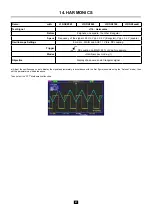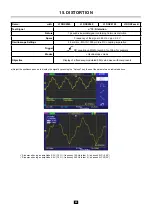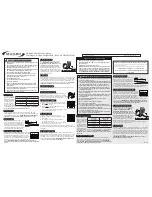
10
5. DATA FRAME-FAULT
Demo: with:
DOX2025
DOX2040
DOX2100
DOX2xxxB
Test Signal
n°5 : Data frame-Fault
Nature
2 signals representing a communication bus with «clock» and «data»
Specs
Vpp ≈ 3.4 V - F ≈ 31 kHz (clock) - 30 µs < L+ < 200 µs (data)
Oscilloscope Settings
25 µs/div. - MAIN = 1 V/div. - AUX ≈ 1 V/div.
Trigger
on MAIN
Modes
Triggered mode preferable - SPO mode, duration ≥ 2 s
Objectives
Capture and observe a rare event using SPO
Triggering on pulse width of the AUX signal
a) Adjust the oscilloscope so as to display the 2 signals in LongMem mode (time base, sensitivities, triggering source on MAIN).
Attention, with this type of signal, “Autoset” operation may be aleatory.
b) Observe a clock and the data bus using the “LongMem” function and the horizontal “Zoom”.
The proposed signal is representative of a communication bus with “data - 8 bits” and a clock.
This communication setup is found in particular with the protocols of serial links such as the I2C bus, USB bus, CAN bus, Ethernet communication, etc.
The first utility of the operating mode is to detect and study faults in signals, without knowing their nature in advance, and therefore without having
to set specific triggering conditions, for example.
In our example, we have frames approximately 3 ms apart and 1 frame in 120, or one frame every 360 ms, with the data at zero.
In STOP, using the horizontal zoom (x 50) and choosing the position of the zoomed window, we can observe and analyse this frame and the one
just before it and the one just after it.
Then, with the x 1000 zoom factor, we observe the 6 clock pulses of the frame of zeros.
Attention ! the x 1000 zoom factor is available only in the «LongMem» mode, which is available only on the
DOX2040 and the DOX2100, on the DOX2025 or on the DOX2040-DOX2100 in Mem.depth mode = “Normal”, the
representation of the signal with the x 1000 Zoom factor will be wrong.











































